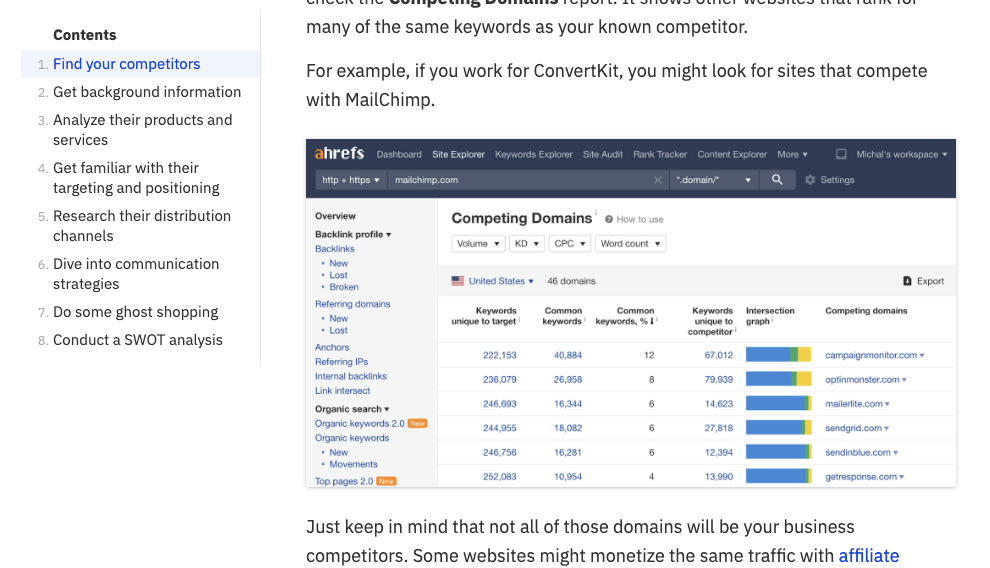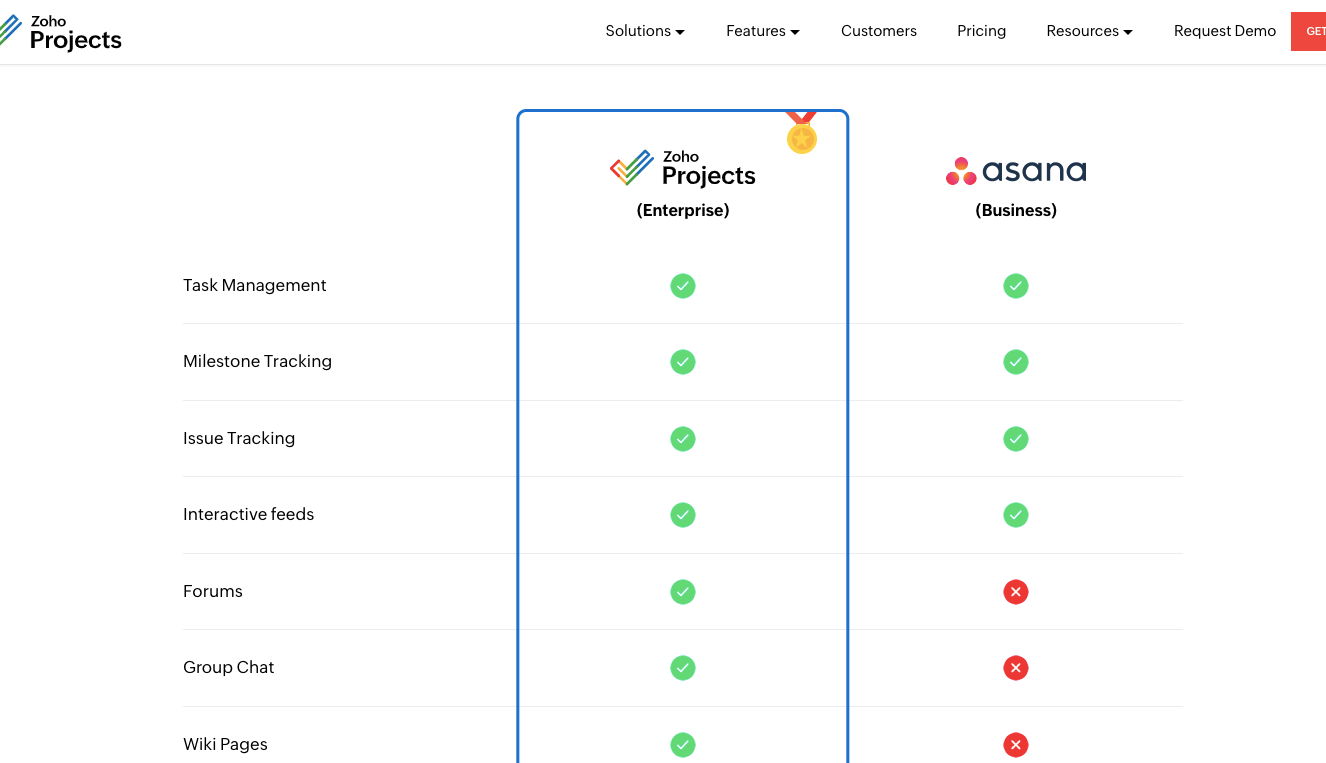The middle of the funnel, which is the middle phase of the marketing funnel, is where customers are lost and won. This is the stage where your prospects are already interacting with your brand and also considering other options. Can you convince him to move down the funnel and into the purchasing cycle? That depends on the kind of content you are serving them in the mid-funnel. Your mid-funnel content strategy can uplift your game and boost your chances of conversion.
Here is an interesting finding by Google, when it ran a study on the mid-funnel stage of the marketing funnel. They found that helping the buyer, which was actively exploring and evaluating options at this stage of the funnel, was more likely to yield a purchase. This is because you are giving them a reason to believe that your services are better than the others. As marketers, our job is to help clear the chaos and confusion that greets the buyer in the mid-funnel, or as Google terms it “the messy middle”.
“We ran data analyses that showed we needed to double down on our mid-funnel marketing to capture more customer demand. We discovered that we could attribute 16X more sales to the previously underused channels in the mid-funnel. And by focusing more marketing efforts on the mid-funnel, we saw an incremental increase in phone sales.”
Curious to know more. Well, let’s jump into it. We’ll start by identifying the unique goals that dictate the middle of the marketing funnel. Then we’ll delve into crafting the right kind of content for the Middle of the Funnel, walking you through its key elements. We’ll wrap up by discussing how to clinch those vital conversions at the funnel’s bottom.
What is Middle of the Funnel Content?
Middle of the funnel typically lies, as its name says, between the top and bottom of the marketing funnel. The top of the funnel is all about awareness; it’s the phase where your content reaches to your customer and makes them aware of your existence. It’s the first handshake. The bottom of the funnel is the phase where your prospects convert and make a final purchase. Punched in between is the most ignored phase of the marketing funnel – the middle.
The Middle of the Funnel (MoFu) acts as the bridge between initial awareness stage (ToFu or top of the funnel) and the final conversion stage (BoFu or bottom of the funnel). But what exactly falls under this category?
Hence, MoFu content assumes an important role. It needs to reach out to prospects – who are already aware of your business/brand and are even engaging with your content – and make them more aware of your products and services. MoFu content plays the role of convincing the audience that your services are better than the others, while educating them more about your services/product, answering various questions that users have in mind (remember they are in evaluation mode), and persuading them to make a choice.
Google’s “Messy Middle” Theory and what does it mean for your mid-funnel strategy?
In 2020, Alistair Rennie and Jonny Protheroe, from Google’s consumer insights team in Great Britain, came out with a game-changing paper on buying decisions – “Decoding Decisions: Making Sense of the Messy Middle”.
At the core of this paper is the concept of the “messy middle”. This is the mid-funnel zone where buyers are constantly flipping between two mental modes: Exploration and Evaluation. One minute they’re swimming in a sea of choices, and the next they’re trimming down their options to make a final decision. And here’s the kicker: this process isn’t a straight line; it’s more like a loop.
Now, what does this mean for your Middle of the Funnel strategy? It’s simple. Your content needs to address both these mental modes. During the exploration stage, your audience is hungry for information. They’re browsing, comparing, and looking for solutions. This is your chance to provide content that educates and piques their interest. But remember, the exploration stage is always “on”, thanks to constant exposure to new products and information. So, as marketers you need to serve them content that is compelling enough to keep them from swinging to a new brand just as they’re about to convert.
MoFu and ToFu: How are they different
Middle of the funnel content often looks very similar to top of the funnel content, but actually is more deeper, and comes with a strong touch of brand personalisation. MoFu content helps to segment the prospects who are most interested to buy by giving them more details about the product. This helps the buyer decide by themselves whether the service/product fits them or not. Middle of the Funnel content focuses on educating and nurturing the relationship.
Top of the Funnel content aims to inform and attract without going into brand mentions or brand detailing. The intent here is largely educate and attract the prospect into the funnel. The aim of this type of content is to make the prospect aware of the brand through information and educational content.
Top Goals of MoFu Content: What does mid-funnel content do?
The goal of mid-funnel content is to educate the user more about the business’ products/services and move them down the funnel. It focusses on influencing the target audience that is stuck in the “messy middle” stage of the funnel, exploring, evaluating and researching various options.
At this stage, your customer wants to hear from how you can solve their problem better than his other options, meaning your competition. If you can do that, you have him flow into the next stage of the funnel – bottom of the funnel.
Here is what middle-funnel content does:
- Nurture the leads and push them in the next stage of the funnel
- Introduce more brand details to the prospect and demonstrate value and benefits of the product.
- Use persuasion and storytelling techniques to capture the attention of the audience.
- Give proof to the customer that he is making the right choice with the brand
- Share more details about the product and service to build credibility, trust and loyalty for the brand.

How to Create Middle of the Funnel Content
Understanding Your Audience
Before crafting any content, the first step is understanding who your audience is at this stage. Unlike the top of the funnel where the audience is broad, the Middle of the Funnel targets a more narrowed-down group—those who have shown active interest. It’s akin to a playwright knowing not just the general audience but also the critics who will be in attendance.
Content Types and Formats
The next thing to consider is the format your content will take. How to Create Middle of the Funnel content involves choosing the right medium. Webinars, emailers, case studies, and in-depth articles work well here. These formats allow you to dive deeper into topics and provide actionable insights.
Tailoring the Message
Once the format is chosen, focus on tailoring the message to meet your audience’s specific needs and questions. This is the stage where you can be more solution-oriented, offering not just answers but actionable advice. Think of this as a custom-tailored outfit; it fits better because it’s made for you.
Using Data and Research
To add credibility and depth to your content, incorporate data and research findings. Middle-of-Funnel Marketing Tactics often involve providing statistics, case studies, or expert quotes to bolster the content’s authority. It’s like presenting a well-substantiated argument in a debate; it holds more weight.
Call to Actions (CTAs)
While the primary goal of the Middle of the Funnel is not direct sales, including subtle Calls to Action can guide the prospect towards the next stage. These CTAs should encourage further engagement, whether it’s downloading an eBook or signing up for a webinar.
Review and Refine
Finally, after your content is live, take the time to review its performance. Use analytics to gauge its effectiveness and, if needed, make refinements. After all, Middle of the Funnel Content Examples and analytics can offer insights into what works and what doesn’t.
What are the key elements of Middle-of-Funnel content?
Relevance
The first element to consider is relevance. Your content should speak directly to the needs and concerns of your audience at this stage. Unlike the broader topics covered at the top of the funnel, middle-of-funnel content should be finely tuned to address specific issues or questions your prospects may have. Hopefully, this will give you a good idea of how to use content for MOF Marketing.
Depth and Detail
The next key element is depth. This is not the stage for surface-level overviews; your audience expects detailed information. Think of this as a deep-sea expedition rather than a paddle in the shallows. Depth adds value and builds trust.
Credibility
Credibility cannot be overstated in its importance. Utilise expert opinions, data, and case studies to substantiate your points. This not only enhances the value of your content but also positions your brand as a trusted authority.
Engagement
Engagement is another cornerstone. Interactive elements like quizzes, calculators, or even interactive infographics can keep your audience invested. What Are the Key Elements of Middle-of-Funnel Content? One of them is undoubtedly the capacity to engage.
User journey consideration
Last but not least, consider the user journey. The content should naturally guide the reader towards the next stage in the funnel, which is the Bottom of the Funnel. Whether it’s through well-placed CTAs or internal links, the transition should be seamless.
How to perfect your middle-of-funnel content strategy
Leverage social proof
One of the most effective ways to build trust is through social proof. Customer testimonials, reviews, and even social media shoutouts can act as powerful endorsements. It’s like having a trusted friend vouch for you; it adds an extra layer of credibility.
Segment your audience
Not all leads in the Middle of the Funnel are created equal. Segmenting your audience based on their behaviour and engagement level allows for more personalized content. It’s akin to a teacher tailoring lessons based on individual student needs.
Utilise retargeting
Retargeting can be particularly effective at this stage. By tracking user behaviour, you can serve up specific content or offers that are more likely to engage and convert. Think of retargeting as a follow-up call after an initial meeting.
Diversify content offerings
While webinars and eBooks are excellent, don’t shy away from experimenting with different formats. Podcasts, interactive quizzes, and even virtual workshops can add variety and engage your audience in new ways.
A/B testing
Never underestimate the power of A/B testing. It allows you to pinpoint what really resonates with your audience. It’s like a chef tweaking a recipe based on customer feedback—small changes can make a big difference.
Time your communications
Timing is often overlooked but is crucial in mid-funnel marketing tactics. Knowing when your audience is most active or receptive can significantly impact engagement rates.
6 best middle of the funnel content strategies & MoFu content formats to use
1. Invest more in superior case studies that build trust and credibility
This is one of the best types of MoFu content that you should have on your website. Strangely, this content format deserves much less attention that it actually should have. A good case study has huge influencing power over a customer and almost always goes in favour of the brand. Usually, case studies or customer success stories dive into how a brand managed to nail customer delight through its product/service. This is one of the most powerful content formats that you should be creating for customers caught in the messy middle.
Here are two companies that are doing this really well. Here is quick look at one case study on the Lusha website, having all the right elements in it.

Databox also has a good collection of case studies that do a good job of convincing prospects.

https://databox.com/databox-case-study-marketlauncher
2. Write product-led blogs that show how the customer’s problem can be solved
Blogs are often thought to the top of the funnel content but they can also work well at the mid-funnel stage, if written as a product or service-driven content piece. The main intent is to show a prospect on how various features of a product can be used to solve various pain points of the customer. So while the blog is educating the customer, it is also selling the various features of the product and building trust.
The Ahrefs blog does this brilliantly by teaching people so many wonderful things about SEO and how to get better results by explaining how to use its own tool.
 Take screenshot from – https://ahrefs.com/blog/competitor-analysis/
Take screenshot from – https://ahrefs.com/blog/competitor-analysis/
3. Publish webinars that feel like a fireside chat
Webinars are time-tested mid-funnel content type that always works. The reason why this format works so well is because it offers answers to questions, shares value and engages the prospects. Webinars help brands showcase their expertise and knowledge level, and this in turn creates trust and credibility for the brand.
The best webinars don’t feel like lectures; they feel like conversations. They’re the digital equivalent of a fireside chat, offering depth, insight, and a touch of intimacy that beckons you toward Middle Funnel Marketing.
4. Publish newsletters that engage the audience and nurture the trust
While email newsletters can also be used at the top of the funnel, it sits perfectly in the middle of the funnel. Newsletters play a crucial role of nurturing the prospect and building trust by sharing more about the brand, its products, its value over and over again to the prospect. The best of newsletters in the middle of the funnel try to eliminate the confusion of the prospect by sharing the right details. It slowly nudges you to explore, experiment with the brand service/product and pushes you down the buyer’s journey.
The best part of a newsletter is that is establishes a personal connect with the target audience. Here are some newsletters that we love –
The newsletter from James Clear (yes the author of the magnificent Atomic Habits), which he started years before he wrote the book.
The Ahrefs newsletter and Hubspot’s newsletter are also brilliant mid-funnel content.
Here is our newsletter, which has been a great marketing tool till now in the middle of the funnel.
5. Write a comprehensive product comparison pages or a use case page
In the middle of the funnel, your target audience is always evaluating your products against your competitors. It is here that you can influence your customer with a detailed product comparison page (which shows what you offer more/better in comparison to your competitors) and use case pages (which explains how your product or service can be used in different scenarios). Perfect middle funnel content solution, where you get a chance to influence your customer and make him understand why you are better suited.
Here is how Zoho does it on its website against all its competitors. In fact, if you head to the footer, a prominent “compare” column stacks allows you to assess Zoho against all its competitors.

6. Offer gated eBook and whitepapers that will offer value to your target audience
Content formats like eBooks and whitepapers have been the staple of traditional mid-funnel content and have become less popular as other content formats have emerged. These are mostly offered as gated content in exchange for email ids of target customers. An eBook usually offers an idea, a trend, or a concept and whet the appetite of the reader to know more, while a whitepaper goes much beyond and drills down everything to the detail. White papers can be considered more as deep dives into particular topics. In B2B buying, buyers (often the top level guys) often want more detailed content about the solution and this is where whitepapers and eBook come into the picture. They are expert content pieces designed to build interest, trust and engagement with the brand so that the prospect moves to the next level of the buyer journey.
Here are some of our popular ebooks.
Conclusion
In this blog, we have talked about why the Middle-of-Funnel content is important in your marketing strategy and why content plays such a big part in this stage of the funnel. We have also explained some great middle of the funnel content strategies that you can implement immediately and also shared some examples of brilliant Middle-of-Funnel content. While everyone’s chatting about the top and bottom, it is time to focus on middle part of the funnel, because that is where your customers will decide to either go forward to go to your competition. It’s not about throwing a bunch of content into the void and hoping something sticks. It’s about methodical planning, from understanding your audience’s pain points to offering them solutions that they can’t ignore. This is the stage where you solidify that budding relationship, providing value that turns a lead into a customer who’s ready to take action.
Create content that works for every stage of the funnel with Justwords
At Justwords, we have expert writers for every stage of the content funnel. They are expert writers who know how to exactly shape the content at every stage of the buyer’s journey, helping your business influence the buying journey through content. Want to know more about our content writing process, or pricing or how we can help you scale up your project, contact us today!





